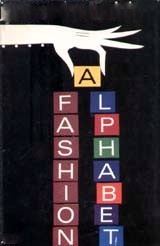 The way movements starts, (re)define themselves, and prosper (or not) in a given national market is always interesting to observe and analyse. Certain patterns repeat across geographies – not implying they’re adjoint – other mechanisms seem to work exactly opposite in one part of the world than in others. Japan – for multiple reasons, not the least the still ongoing, if diminishing, cultural influence onto its neighbours – remains an interesting case to look at. Which is one of the reasons Shirahime dedicated an entire category to the country.
The way movements starts, (re)define themselves, and prosper (or not) in a given national market is always interesting to observe and analyse. Certain patterns repeat across geographies – not implying they’re adjoint – other mechanisms seem to work exactly opposite in one part of the world than in others. Japan – for multiple reasons, not the least the still ongoing, if diminishing, cultural influence onto its neighbours – remains an interesting case to look at. Which is one of the reasons Shirahime dedicated an entire category to the country.
For starters, there are a couple of interesting things to note about how the ‘sustainability + fashion’ discussion is evolving in Japan. And vocabulary, its use and evolution alone is a tell tale in this context:
- The term ‘ethical’ (as in ‘ethical fashion’) has entered the language only very recently – 18 to 24 months ago – and is currently used as-is as English loan word, but written in the Japanese Katagana sillabary (エシカル). This for a number of reasons, the main one being that there is no Japanese word that carries a notion similar to that of ‘ethical’ as when used in the context of commodities production. 倫理的 (pronounced: rinriteki) as well as 道徳的 (pronounced: dotokuteki) come with nuances related to (unwritten) rules or implicit (Japanese) cultural norms of conduct and moral.
The Japanese ‘sustainable fashion’ scene has founded this lack rather useful: they voluntarily adapt the loan word, and – so it seems – do not suffer from any historic, and rather unfavourable clichés existant in Europe and the US. Not the least because the word ‘ethnic’ – also a loan word – is spelled entirely different when localised (エスニック). - In contrast, the word ‘natural’ – again the English loan word (ナチュラル) – is most commonly used in the context of products, and immediately conjures images of clothes brought back by backbackers from India. The association of ナチュラル (natural) with エスニック (ethnic) is important although not necessarily detrimental to the same degree as in Europe.
But: ‘natural’ until recently came also with the connotation of a fashion sense that defied the mainstream for its bland use of colour, and distinctly comfortable designs.
Yet, also here time has created a distinct shift in perception: When a few years ago signing up to such a fashion sense would have been the ultimate social death for any early-tweens girl, ‘natural’ cosmetic, ‘natural make up style’ and ‘natural clothing style’ have become the ultimate thing to aim at. Gone are the days of dangerously high heels, outrageously patterned dresses and skirts, and colour combinations that hurt the eye. - Much more than anywhere else, sustainable/ethical fashion in Japan comes with a clear sense of craftsmanship. The Japanese 物作り (monozukuri) mindset is likely one of the principle reasons for that.
What is Monozukuri?
"Monozukuri is a compound word comprising 'mono' which means 'products,' (literally, 'thing') and 'zukuri' which means 'process of making or creation'.
The concept embraces more than the literal meaning. It offers the idea of possessing the 'spirit to produce excellent products and the ability to constantly improve a production system and process'. The concept carries 'overtones of excellence, skill, spirit, zest, and pride in the ability to make things good things very well. Monozukuri is not mindless repetition; it requires creative minds and is often related to craftsmanship which can be earned through lengthy apprenticeship practice rather than the structured course curricula taught at traditional schools. In that sense, Monozukuri is an art rather than science."
It is a mind set I have encountered times and over again. From the simple sushi shop around the corner, over Uniqlo’s approach to their collection design, through to one of the most successful and innovative global flat knitting machine manufacturers.
It is thanks to this mind set that also Japanese consumers tend to have a weakness for exclusive, well made quality items, and are happy to pay for them if the can afford them. - Last, but certainly not least, the fact that activism isn’t a strong – or even widely accepted – aspect of Japanese culture, may potentially pan out to the advantage of ethical fashion.
Principalising is something that has never sold any garments – or not many, in any case. This was, and remains, a basic assumption straight away by all Japanese brands I have had the opportunity to talk to. Product design, quality and customer desire are at the forefront of the designers’ and brands’ awareness. In a sense hence, the ‘coolness’ factor (or maybe more accurately: the ‘fashionable’ factor) is at the forefront of what is being offered, and the backstory comes later. And, while ethical fashion may be less of a topic overall, those brands that fall into this category, struggle with fewer of the clichés and social hurdles than their European and American peers.

To conclude: Language, the history of a market and how customers are being sensibilised (in the past, as well as in the present) matters a huge deal with regards to how new concepts – sustainable or ethical fashion in this case – are being perceived.
It cannot be underestimated that new territory needs to be chartered and marked carefully. Sometimes, a slow development of a new trend may actually be an advantage, because it allows for a carefully measureed plan of action and progress. The use of terminology and cultural concept is part of this, and can help – or hinder – what we aim to achieve.

